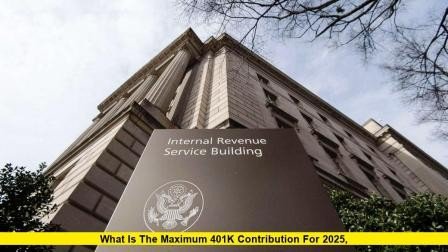The what is the maximum 401k contribution for 2025 is now officially confirmed, giving workers and retirees clarity on how much they can save in tax-advantaged retirement plans. For 2025, employees can contribute up to $23,500 to their 401(k). This is a $500 increase from last year’s limit, reflecting adjustments for inflation.
For those aged 50 and older, the catch-up contribution remains an important benefit. Eligible workers in this group can put in an additional $7,500, bringing their total contribution limit to $31,000 for 2025.
Adding another layer, the SECURE 2.0 Act introduced a special provision for people aged 60 through 63. This group can make a “super catch-up” contribution of $11,250, allowing them to save as much as $34,750 in their 401(k) during 2025.
Contribution Summary for 2025
| Age Group | Regular Limit | Catch-Up | Total Personal Limit |
|---|---|---|---|
| Under 50 | $23,500 | $0 | $23,500 |
| 50–59 or 64+ | $23,500 | $7,500 | $31,000 |
| 60–63 | $23,500 | $11,250 | $34,750 |
Employer and Employee Combined Contributions
While employee contributions are the foundation of a 401(k), employer contributions—whether through matching programs, profit sharing, or other incentives—can dramatically enhance total retirement savings. For 2025, the IRS has raised the limits on how much can flow into a single participant’s 401(k) when both employee and employer contributions are combined. These limits are designed to ensure that retirement plans remain fair, sustainable, and aligned with broader tax policy.
- $70,000 for workers under age 50: Younger employees, who may not yet qualify for catch-up contributions, can still see substantial growth in their accounts when employer contributions are factored in. For example, an employee contributing the full $23,500 could receive an additional $46,500 in employer contributions, reaching the total maximum. This underscores how valuable strong employer matching programs can be in accelerating retirement readiness.
- $77,500 for workers aged 50–59 or 64+: In addition to the standard contribution limit, workers in this age group can take advantage of the $7,500 catch-up. When combined with potential employer contributions, the total cap increases, offering older employees the chance to supercharge their savings during critical pre-retirement years.
- $81,250 for workers aged 60–63 (with the super catch-up): This group benefits the most in 2025 thanks to the new super catch-up contribution of $11,250. With this provision, employees in their early 60s—often their highest earning years—can maximize both personal and employer contributions, reaching a record high of over $80,000 in a single year. This opportunity can be transformative for those looking to make a final, strong push toward their retirement goals.
These totals represent the absolute maximum contributions permitted by law for 2025. However, actual amounts may vary depending on each company’s retirement plan design. Some employers may offer full matching up to certain percentages of salary, while others may provide smaller contributions or none at all. Employees should review their plan documents and employer policies to understand how much they can realistically contribute and receive.
Ultimately, the 2025 combined limits highlight the importance of maximizing both employee contributions and employer benefits. Workers who take full advantage of these opportunities can significantly boost their long-term financial security.
Read also-How to Change My 401k Contribution: 2025 Real-Time Guide with New Rules
Why These Updates Are Important
The increase to $23,500 for employee contributions in 2025 is more than just a number—it’s a reflection of how retirement savings rules are adapting to rising living costs. By raising the annual deferral limit, workers are given a better chance to keep pace with inflation while steadily building their retirement nest egg. Even small annual increases compound significantly over time, making this adjustment especially valuable for younger workers who are decades away from retirement.
The continuation of the $7,500 catch-up contribution for individuals age 50 and older remains a crucial tool. For many Americans, the years leading up to retirement are when financial responsibilities, such as mortgages or college expenses, begin to decline. This extra allowance enables older workers to accelerate savings and close potential gaps, ensuring they are better positioned to maintain their lifestyle after leaving the workforce.
A key highlight of 2025 is the introduction of the “super catch-up” contribution for workers ages 60 to 63. At $11,250, this special provision recognizes that these are often the peak earning years for many professionals. By allowing significantly higher contributions during this window, the rule empowers individuals to make a final, powerful push toward their retirement goals. This can be especially impactful for those who may have delayed saving earlier in their careers or experienced financial setbacks.
Finally, it’s not just employees who need to pay attention—employers also play a role. Companies that sponsor 401(k) plans must ensure their systems, plan documents, and payroll processes are updated to accommodate these new limits, particularly the super catch-up provision. Failing to update could result in administrative issues or prevent employees from taking full advantage of the expanded opportunities.
Key Takeaways
- Regular employee contribution limit: $23,500
- Catch-up contribution (50+): $7,500
- Super catch-up (ages 60–63): $11,250
- Combined employee + employer total: up to $81,250 depending on age
The updated contribution rules for 2025 highlight the importance of planning ahead. Whether you’re early in your career or just a few years away from retirement, understanding these limits can help you make smarter saving decisions.
How do these new numbers affect your retirement strategy? Share your thoughts or questions below—your perspective could help others navigating the same path.
